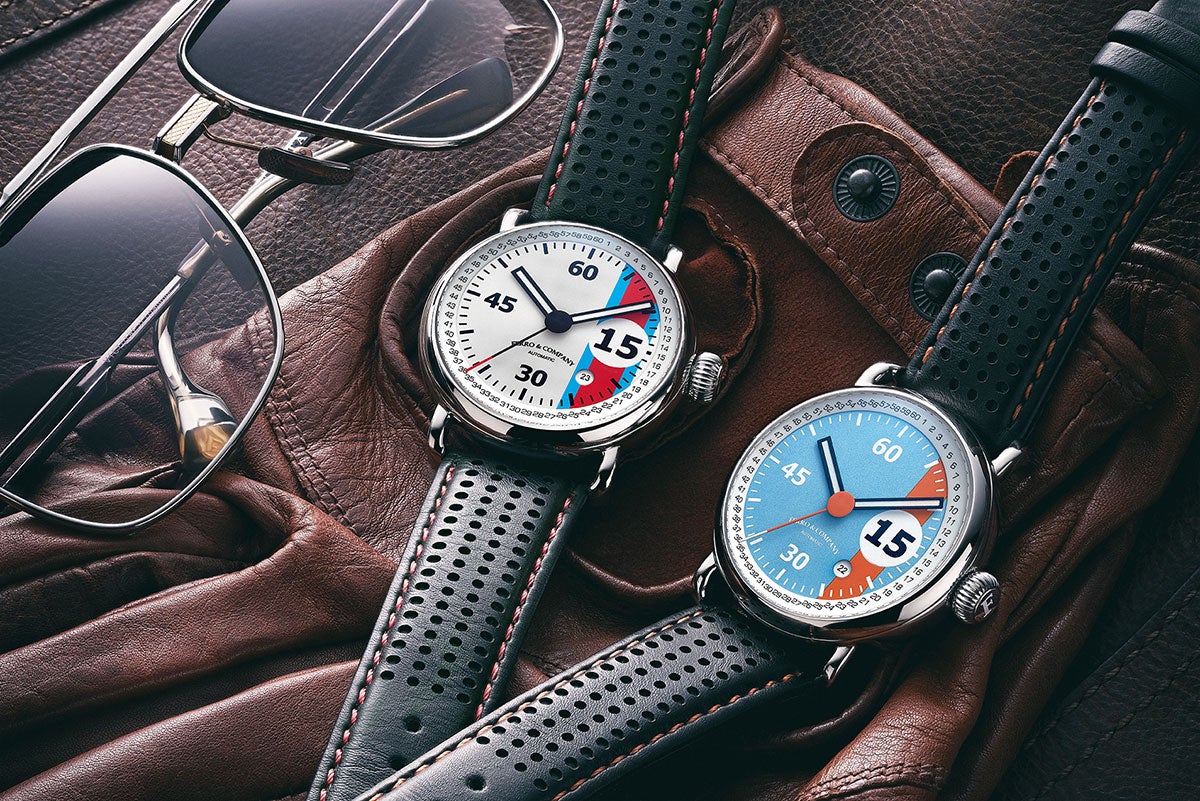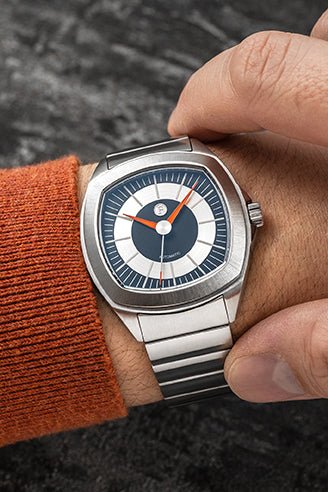Characteristics of Quality Watches
Watches come in different styles and flavors. From cheap plastic watches to premium luxury watches made of exotic materials. Picking the right watch isn’t easy.
People often look at price as the sole indicator of quality. We can learn a lot about the watch by knowing how much it costs. But the price alone never tells the whole story. True, a cheap watch can never be high quality, but it gets hard to tell the difference as soon as we get to watches that cost a couple of hundred dollars and up.
We created this article to help you understand what makes a high-quality watch. We’ll look at the different materials used, and which movements are considered premium. We’ll also touch on watch straps and the design of the watch.
All these things determine the quality of the watch. If you know what you’re looking for, you might find the right watch for yourself and save some money in the process. Let’s start with watch materials.
Materials
While many watches look similar, they’re actually made of different types of materials. Some buyers don’t bother learning about materials when choosing the right watch. This is a common mistake we see. The material of the watch determines its durability. The better the material, the longer it will last. The material also determines how much care your watch needs. Make sure you pick the watch made of durable and low-maintenance materials.
The most common materials we find in wristwatches are stainless steel, titanium, ceramics, gold, carbon-fiber, plastic, and wood. Kids and digital watches are almost always made of plastic. While there’s nothing wrong with plastic watches, you shouldn’t expect them to last as long as metal watches.

On the other end of the spectrum, we have ceramic watches. Ceramic is a hardened form of clay. It’s heat and scratch-proof, making it a solid material choice for a watch. Ceramic is a popular choice for luxury watches because of its long-lasting shine. The main downside of ceramic watches is they aren’t as impact-resistant as stainless steel watches. The last thing you need is for your expensive watch to break.

This brings us to stainless steel, the most popular watch material around. Stainless steel is durable, lightweight, has solid scratch resistance, resists corrosion, and keeps the shine for a long time. We have different finishings for stainless steel watches, with the two most popular ones being polish finishing and brush finishing.

But not all stainless steel is made equal. Watches are constructed with different grades for stainless steel, and it’s important we know what different grading means. Stainless steel is classified based on the composition of steel and non-steel materials. Non-steel materials are added to prevent rusting. We classify steel into three distinct categories: 200, 300, and 900-series based on the composition. 900 series are used by Rolex watches.
At Ferro Watches, we use grade 316L stainless steel. This is a great material for wristwatches because it can withstand extreme temperatures and is very resistant to corrosion. It’s also allergy-safe and is even often used to make medical devices.
Another watch element we should mention when talking about materials is the construction of the inner case. Budget watches often use plastic movement holders inside the watch. This isn’t seen to the consumer since the plastic is held within the case. You will have to check the spec sheet to see what kind of material is used for the inner case.

When you pair premium grade stainless steel case with scratch-resistant sapphire crystal and premium leather straps, you get a durable, great-looking quality watch.

Movements
We can think of the watch movement system as the thing that keeps the watch going. What an engine is for a car, the movement is for the watch. The small parts within the watch ensure that the watch runs smoothly and always shows the correct time. It’s important to note there’s a huge difference between classic watches and smartwatches. Smartwatches use processors, not movements, to run.

There are different variations of watch movements on the market, but most of them can be divided into three main categories - mechanical, automatic, and quartz.
Mechanical movements are the oldest watch movements we know. It’s been around for decades. Most modern mechanical watches use the design known as the Swiss lever escapement. In simple words, a mechanical watch works by releasing stored energy from a spring that drives a series of gear that move the hands of the watch.

What makes mechanical watches interesting is the craftsmanship that goes into making them. That’s why a lot of expensive luxury watches use this technology. And we shouldn’t forget about the wow factor that goes into wearing a watch built on traditional technology. Ferro & Company 356 Collection are equipped with Swiss ETA 6498 mechanical movement.

Automatic watches are very similar to mechanical watches. In fact, the interior mechanism is almost the same. The only difference is how automatic and mechanical watches are wound. Mechanical watches come with a crown that we have to wind, whereas, automatic watches do this automatically while we wear them. They have a rotor that uses oscillating weight to drive the spring.
Automatic movements have also been in use for decades. And they suffer from the same problems as mechanical watches - they aren’t the most accurate. Automatic watches also tend to be thicker than mechanical watches. They are generally more popular because you don’t have to wind them as often.

The last movement type we need to examine is quartz movement. Seiko created the first Quartz Watch in the late1960s. Quartz watches use a battery that sends an electrical impulse to the quartz crystal, which begins to oscillate because of the impulse. This oscillation, then drives the gear that moves the watch’s hands.

This movement is by far the most accurate movement system around. The most precise quartz watches vary less than 5 seconds per year. That’s very accurate compared to two seconds a day in mechanical watches. Why is it then that luxury watches don’t use quartz movement? Well, it’s because they lack the craftsmanship and the tradition that goes into producing a mechanical watch. Call it romance, but true watch aficionados appreciate the labor that goes into traditional watches.
Swiss, Japanese, and Chinese Movements
Let’s quickly stop and discuss the difference between Swiss and Japanese watch movements. Technically, there’s not a lot that separates the two movements. It all comes down to practicality and luxury. Swiss movements pride themselves on craftsmanship, while Japanese movements are focused on practicality.

Japanese movements are mostly assembled on automated robotics lines. This almost eliminates the margin for human. Some say that Japanese movements look raw, while Swiss movements are clean and defined. The manufacturing process makes Japanese movements less expensive while providing the same, or better, accuracy.

The last movement we need to mention is the Chinese movement. It was developed in the 1970s in China as a way to consolidate the technology used in Chinese factories. Today, the movement is mostly used in simple budget automatic watches. These movements are considered inferior compared to Swiss and Japanese movements in every category.

So, which movement is the best? We can eliminate Chinese movements, but about Swiss and Japanese movements? Honestly, there’s no clear answer here. Both systems are very reliable and accurate. And both will work for a long time. Go with Swiss movements if you care for craftsmanship and go with Japanese movements if you want the best accuracy. In any case, it’s hard to go wrong with any of the two.
Watch Straps
Your watch strap is an important element of your wristwatch. Not only does it dictate how the watch feels on your wrist, but it also impacts the way the watch looks. A cheap strap will make the most luxurious watch look, well, cheap. That’s why you should look at the complete package when buying a wristwatch.
Leather straps continue their reign as the most popular material choice when it comes to wristwatches. The only exception are dive watches, where leather isn’t the best choice. Other popular materials for watch straps are nylon, rubber, and textiles.

It’s hard to go wrong with a genuine leather strap that matches the design of your watch. We understand some people have reservations when it comes to leather straps. If you’re vegan or simply avoid animal products, you can opt for premium nylon straps that look and feel premium.
The most important thing is to make sure your watch strap matches your watch.
Aesthetic Design
One of the things that define the watch is the design. Even if the watch uses the finest mechanical movements and is made of the best materials, but the watch’s design looks cheap, everyone will think that the watch is low-quality.
It’s impossible to talk about aesthetics without noting the subjective taste. Everyone perceives what’s aesthetically pleasing differently. What we think is beautiful might not be your favorite.
We at Ferro Watches are huge fans of vintage watch designs. We have motorsport-inspired watches, pilot watches, and classic vintage-style watches. These types of watches never go out of style. They are sleek, minimalistic, and can be used with almost any outfit you’re wearing.
There’s nothing wrong with flamboyant designs and watches that grab our attention, but they aren’t for everyone. And there are only very specific situations when you can wear them. A classic watch will never go out of style. And as long as you take care of the watch, you can wear the same piece for the rest of your life.
You now know enough about watches to make a smart buying decision. If you take everything we shared with you into consideration the next time you’re buying a watch, you will be able to find a high-quality watch without breaking the bank.
Other things you can consider when buying a watch are the water resistance of the watch, the warranty it comes with, and the heritage of the manufacturer. Ferro watches come with two years warranty for manufacturing defects, and we solve all problems even if the warranty expires. Every watch is water resistant, and our brand name is synonymous with quality and reliability.
The best place to start your search for a new watch is on this website. We have a great selection of high-quality watches available for you. Are you a pilot watch guy? Or do you maybe crave speed and want a race inspired watch? How about a classic vintage dress watch? We have you covered. Hop on to our shop and pick your favorite.



